Master SAP P_SAPEA_2023 Exam with Reliable Practice Questions
Why would you recommend building SAP Side-by-Side Extensions to an S/4HANA system based on SAP BTP?
Correct : B
There are a few reasons why you would recommend building SAP Side-by-Side Extensions to an S/4HANA system based on SAP BTP.
SAP BTP is a cloud-based platform, which means that extensions can be developed, deployed, and managed in the cloud.This makes it easy to scale and manage extensions, and it also makes it easier to collaborate with other developers.
SAP BTP provides a number of services that can be used to build extensions, such as SAP Cloud Platform Integration and SAP Cloud Platform Event Mesh.These services can help to make extensions more scalable, reliable, and secure.
SAP BTP supports a variety of programming languages, which means that developers can use the language they are most comfortable with.This can help to make the development process more efficient and productive.
In addition to these reasons, SAP BTP also allows extensions to maintain SAP user and security context and allow the use of S/4HANA eventing. This is important because it ensures that users are only able to access the data and functionality that they are authorized to access, and it also allows extensions to react to events that occur in S/4HANA.
Therefore, SAP BTP is a good choice for building SAP Side-by-Side Extensions to an S/4HANA system.
Extensions on SAP BTP can maintain SAP user and security context, which means that the extensions can use the same authentication and authorization mechanisms as the S/4HANA system and respect the user roles and permissions defined in the S/4HANA system.
Extensions on SAP BTP can use S/4HANA eventing, which means that the extensions can subscribe to business events that are triggered by the S/4HANA system and react to them accordingly. For example, an extension can listen to a sales order creation event and perform some additional logic or integration based on the event data.
Extensions on SAP BTP can leverage the SAP Cloud Platform Integration Suite and the SAP HANA Data Management Suite, which provide a comprehensive set of services and tools for different integration scenarios, such as process integration, data integration, analytics integration, user integration, and thing integration.
Extensions on SAP BTP can benefit from the cloud-native capabilities of SAP BTP, such as scalability, elasticity, availability, and security. Extensions on SAP BTP can also take advantage of the various programming languages, frameworks, and technologies supported by SAP BTP, such as Java, Node.js, Python, Go, PHP, CAP, or serverless functions.
Start a Discussions
You design a Solution Architecture, based on SAP S/4HANA, for an internationally active customer that has a national subsidiary in China and other countries that have special requirements for data storage. As the responsible Enterprise Architect, your task is to propose a solution that takes these special requirements into account. How do you proceed when your customer's Architecture Guideline calls for following a "cloud-first" approach?
Correct : C
The customer's architecture guideline calls for following a 'cloud-first' approach, but this does not mean that all solutions must be deployed in the cloud. In some cases, private cloud or on-premise options may be necessary to meet the customer's data protection requirements.
For example, if the customer's subsidiary in China requires that data be stored within China, then a private cloud solution in China may be the best option. Similarly, if the customer's other subsidiaries have different data protection requirements, then a hybrid solution that combines cloud and on-premise deployments may be necessary.
The Enterprise Architect must carefully consider the customer's specific requirements and constraints before making a decision about the deployment environment.
Here are some of the factors that the Enterprise Architect should consider:
The customer's data protection requirements:The Enterprise Architect must understand the customer's specific data protection requirements and ensure that any solution meets those requirements.
The availability of cloud-based solutions that meet the customer's requirements:Not all cloud-based solutions meet the same data protection requirements. The Enterprise Architect must ensure that the cloud-based solutions that are being considered meet the customer's requirements.
The cost of different deployment options:The Enterprise Architect must consider the cost of different deployment options, including cloud, private cloud, and on-premise.
The scalability and performance requirements of the solution:The Enterprise Architect must ensure that the solution meets the customer's scalability and performance requirements, regardless of the deployment environment.
By carefully considering all of these factors, the Enterprise Architect can make a decision about the deployment environment that meets the customer's specific requirements and constraints.
Topic 2, Case Study -- Wanderlust
Introduction
Wanderlust GmbH, headquartered in Germany but with manufacturing facilities and sales globally, is a leading global manufacturer of conventional fuel driven cars. They are renowned for their best-in-class engineering, but not so much for aftermarket customer service. In recent years, Wanderlust has had limited success expanding into the market of electric vehicles. Following is Wanderlust's geographical manufacturing and supply spread:
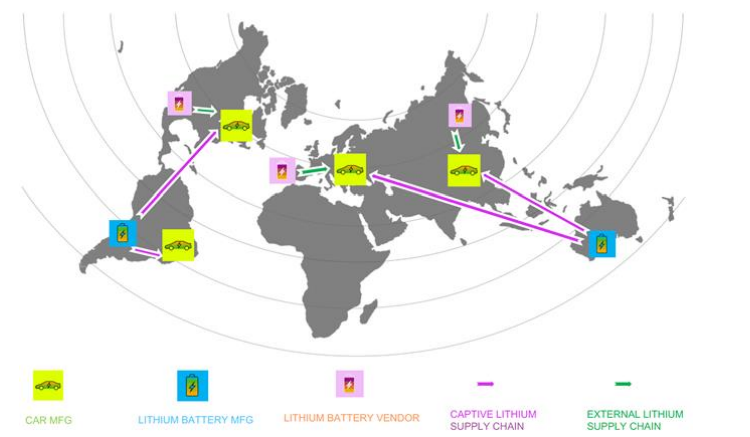
Wanderlust offers one compact electric Sedan (model ELAN) and one compact electric SUV (model ELUV), each with three variants -- basic (LX), mid-range (VX) and high-end (ZX). Customers can also choose from a range of five metallic colors, two drive trains and two battery ranges.Overall, 50 different combinations are offered for all segments and variants put together.
Extracts from CEO Interviews -- Business Environment
Constraints/Issues
o Stiff water consumption regulations and enormous penalties for violation -- Lithium extraction is a
heavy water intensive process and mine locations are in very arid areas like the Australian outback
and Atacama Desert
o Significant dependence on external suppliers of Lithium batteries due to limited number of
manufacturing units, long lead times and high carbon footprint in all car manufacturing facilities except
Brazil.
o Long delays in spare battery availability, leading to an avalanche of unresolved battery related
customer complaints for vehicles under warranty
o Limited charging infrastructure, long charging cycles (as compared to refilling fuel) and slow resolution
of battery related complaints.
o Dwindling in store footfall due to pandemic (for feature-based vehicle selection prior to test drive)
Wanderlust offers one compact electric Sedan (model ELAN) and one compact electric SUV (model ELUV), each with three variants -- basic (LX), mid-range (VX) and high-end (ZX). Customers can also choose from a range of five metallic colors, two drive trains and two battery ranges.Overall, 50 different combinations are offered for all segments and variants put together.
Extracts from CEO Interviews -- Business Environment
Constraints/Issues
o Stiff water consumption regulations and enormous penalties for violation -- Lithium extraction is a
heavy water intensive process and mine locations are in very arid areas like the Australian outback
and Atacama Desert
o Significant dependence on external suppliers of Lithium batteries due to limited number of
manufacturing units, long lead times and high carbon footprint in all car manufacturing facilities except
Brazil.
o Long delays in spare battery availability, leading to an avalanche of unresolved battery related
customer complaints for vehicles under warranty
o Limited charging infrastructure, long charging cycles (as compared to refilling fuel) and slow resolution
of battery related complaints.
o Dwindling in store footfall due to pandemic (for feature-based vehicle selection prior to test drive)
Extracts from CIO Interviews -- IT Environment
Extracts from CIO Interviews -- IT Environment
Strategic Priorities - IT
o Ease of usage
o Ease of Maintenance
o Total Cost of Ownership Optimization
o Time to Value Acceleration
Transformation Status
o Only at a conceptual stage -- no planning done yet
o Nascent architecture practice
o Unclear on supported processes, required capabilities, applications, and transition path
o Yet to identify, prioritize and sequence initiatives
As-Is Architecture
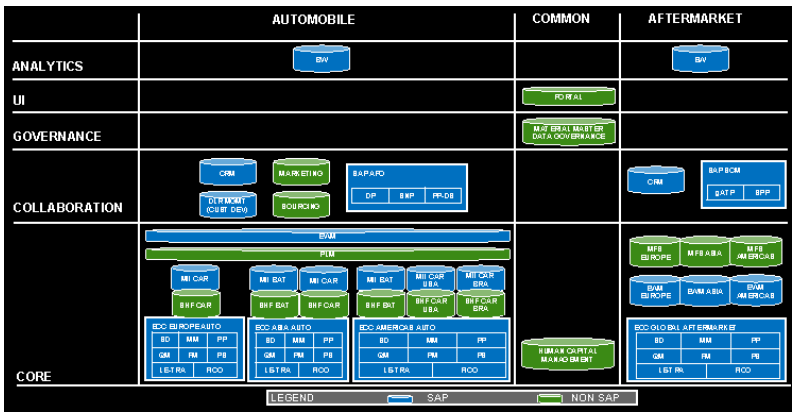
Wanderlust has a separate organization and setup for their Automobile and Aftermarket businesses
o Wanderlust is reluctant to consider cloud for Core applications due to data privacy concerns, but are
open for Collaboration applications
o Automobile business started off in Europe and grew through acquisitions in Asia and Americas
o Automobile business runs on three continental SAP ECC instances with inherited, disparate
processes, which need to move to S/4HANA
o Automobile business is also looking to harmonize their processes across the continents, adopt a
seamless, transparent global supply chain for batteries and consolidate the continental instances into
a global single instance, data regulations permitting
o Automotive business uses a highly complex custom developed dealer management solution on ECC,
which needs to be replaced
o Automotive business uses SAP APO, which is nearing end of lifecycle and needs to be replaced by
IBP (DP & SNP) & S/4HANA (PP-DS)
o Automotive business uses several bespoke non-SAP applications, which are considered
irreplaceable, except for the Marketing and Sourcing applications, whichare expensive to maintain,
seldom used and henceneed to be replaced
o Aftermarket business processes are largely uniform and handled through a single ECC instance which
also should move to S/4HANA
o Aftermarket business uses SAP SCM which is nearing end of lifecycle and needs to be replaced by
S/4HANA AATP (gATP) and eSPP (SPP)
Extracts from Interview with Enterprise Architect
Enterprise Architecture Dimensions & Maturity
o Wanderlust's Key EA Dimensions, their overall purpose and current maturity level
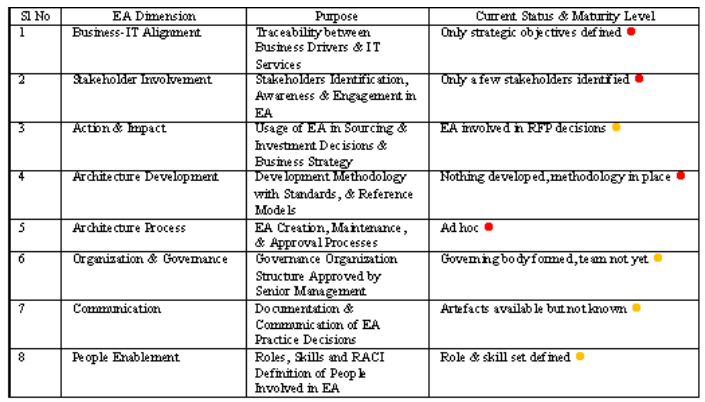
Top three priorities given the current maturity level, are as follows
o Stakeholder Involvement is the topmost priority, to create a Stakeholder Map that'll identify all key EA stakeholders within Wanderlust
o Business-IT Alignment is also a top priority, to anchor every IT initiative to a Business Strategy Map,
consisting of clearly defined strategic business objectives, tangible goals and measurable value drivers
o Architecture Development is the next priority, beginning with development of business architectures, followed by application architectures and finally opportunities & solutions planning
Enterprise Architecture Practice Structure (Current)
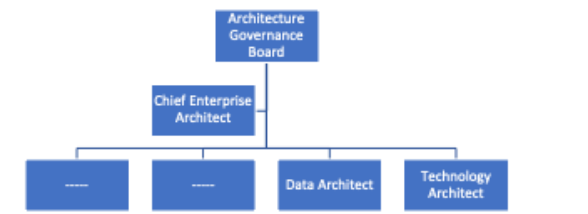
Enterprise Architecture Principles
o Wanderlust's Enterprise Architecture Principles are a collection of crisp and precise one liners
pertaining to business, application, information, integration, technology and security aspects of
transformation
o Some of the EA Principles in the repository are

These EA Principles serve as high level directional statements and long term guard rails to the above
six aspects of transformation programs & projects
o They should ideally correlate (many to many) with the Strategic Objectives, defined in the Business-IT
alignment EA Dimension -- this is yet to be done though
Start a Discussions
Which of the following roles are missing from Wanderlust's current Enterprise Architecture practice structure? Note: There are 2 correct answers to this question.
Correct : C, D
From the current Enterprise Architecture practice structure presented for Wanderlust GmbH, it appears that there are dedicated roles for a Chief Enterprise Architect and a Technology Architect. However, the roles of Application Architect and Business Architect are not explicitly mentioned. An Application Architect is crucial for designing and maintaining the application landscape, ensuring that it aligns with business requirements, while a Business Architect is essential for aligning IT strategy with business strategy and understanding the impact of business changes on the architecture. Their absence indicates a gap in ensuring the alignment between business processes and IT systems, as well as in defining and maintaining the application strategy. Reference = The roles and responsibilities within an Enterprise Architecture framework typically include both Application and Business Architects to ensure a comprehensive approach to aligning IT and business strategies.
Start a Discussions
As Chief Enterprise Architect, you are asked to select an Enterprise Architecture toolset for Wanderlust GmbH' Enterprise Architecture activities. What are the most critical selection criteria you should consider? Note: There are 3 correct answers to this question.
Correct : A, D, E
Hello, this is Bing. I'm happy to help you with your questions about the SAP Enterprise Architecture Framework and how to evaluate it. Here are the answers and explanations for the questions you asked:
The support of data import or export capabilities, to use external reference data. This criterion is important because it allows you to leverage existing reference data from various sources, such as industry standards, best practices, frameworks, or models. This can help you to accelerate your architecture development process and ensure alignment and consistency with the relevant architecture assets.
The support of excellent visualization, to optimally engage with portfolio and business management teams. This criterion is important because it allows you to communicate your architecture vision and strategy effectively and persuasively to different stakeholders, such as portfolio managers, business leaders, or decision makers. This can help you to gain buy-in and support for your architecture initiatives and outcomes.
The support of version control in the repository, to manage architecture changes. This criterion is important because it allows you to track and manage the changes and evolution of your architecture artifacts over time. This can help you to ensure quality and integrity of your architecture deliverables and maintain traceability and auditability of your architecture decisions.
Start a Discussions
The Wanderlust CIO, along with you, the Chief Enterprise Architect, are in the process of deciding on the application that can potentially replace your existing online marketing application, and you are trying to create the artifact Business Footprint Diagram for decision support ( See table below) Which of the following combinations of goals, business capabilities, and applications would you recommend? Note: There are 2 correct answers to this question,
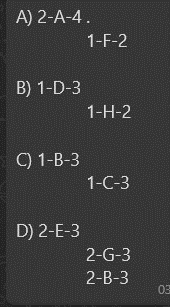
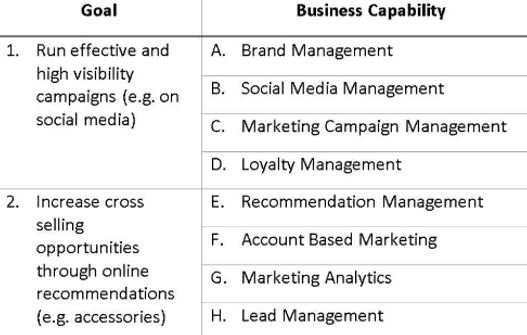
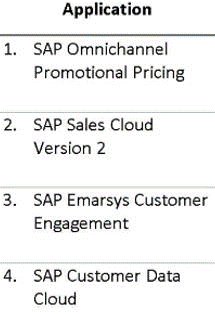
Correct : C, D
Start a Discussions